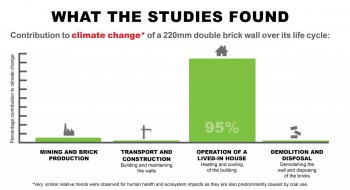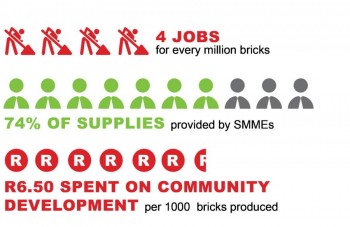LCA: Life Cycle Assessment of clay brick walling in South Africa
In 2013, ClayBrick.org and the University of Pretoria made history through the signing of the agreement to pursue the industry 'Life Cycle Assessment for Clay Brick Walling in South Africa'. This is the first and largest research project of its kind in South Africa in terms of size, cost, duration and magnitude.
The study was the culmination of almost a year of planning and preparation, and then four years of intense research for the CBA Technical Team led by Nico Mienie, brick makers who took part in the survey, and the highly-qualified research team from the University of Pretoria. The research was led by Professor Karel Bakker (Dean of the Faculty of Architecture), Project Coordinator Professor Piet Vosloo and Research Assistant Greg Rice.
The Life Cycle Assessment benchmarks Clay Brick as a sustainable building material in the construction sector, allowing architects and property owners to calculate the overall environmental impacts of a Clay Brick building, from initial production to overall operation, in terms of energy usage, water consumption, resultant greenhouse gas emissions and recyclability, among others. The thermal performance of Clay Brick walling structures is compared against other materials, like the LSFB walling systems.
The following Life Cycle stages are considered:
- Clay extraction
- Brick production
- Transport to construction sites
- Construction on site, including the production of mortar
- Operational life of the building, including energy usage and other maintenance considerations
- Demolition and disposal
- Reuse and recycling of clay brick products
- The Socio-economic value of the clay brick industry to South Africa
A thermal modelling study of clay brick was undertaken, comparing their associated thermal performance to other construction materials. A 40 m² house, a 130 m² house, as well as a 130 m² house and a small office design of ± 2000 m² were compared. Each of these construction methods was analysed for each of the three designs, as well as across the six different climatic zones in South Africa, as per SANS 10 400 XA. Thermal modelling and designs will be based on current SANS 10 400 XA and SANS 204 building standards.
Published: February 2017
This 29-page summary was funded by the Swiss Agency for Development and Cooperation (SDC) as part of the Energy Efficient Clay Brick (EECB) project implemented in South Africa by Swisscontact.




